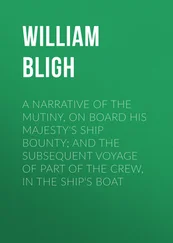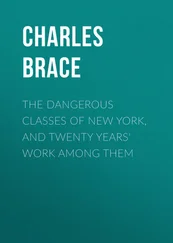Mattias Berg - The Carrier
Здесь есть возможность читать онлайн «Mattias Berg - The Carrier» весь текст электронной книги совершенно бесплатно (целиком полную версию без сокращений). В некоторых случаях можно слушать аудио, скачать через торрент в формате fb2 и присутствует краткое содержание. Город: London, Год выпуска: 2019, ISBN: 2019, Издательство: MacLehose Press, Жанр: Триллер, на английском языке. Описание произведения, (предисловие) а так же отзывы посетителей доступны на портале библиотеки ЛибКат.
- Название:The Carrier
- Автор:
- Издательство:MacLehose Press
- Жанр:
- Год:2019
- Город:London
- ISBN:978-0-85705-788-4
- Рейтинг книги:4 / 5. Голосов: 1
-
Избранное:Добавить в избранное
- Отзывы:
-
Ваша оценка:
- 80
- 1
- 2
- 3
- 4
- 5
The Carrier: краткое содержание, описание и аннотация
Предлагаем к чтению аннотацию, описание, краткое содержание или предисловие (зависит от того, что написал сам автор книги «The Carrier»). Если вы не нашли необходимую информацию о книге — напишите в комментариях, мы постараемся отыскать её.
The Carrier — читать онлайн бесплатно полную книгу (весь текст) целиком
Ниже представлен текст книги, разбитый по страницам. Система сохранения места последней прочитанной страницы, позволяет с удобством читать онлайн бесплатно книгу «The Carrier», без необходимости каждый раз заново искать на чём Вы остановились. Поставьте закладку, и сможете в любой момент перейти на страницу, на которой закончили чтение.
Интервал:
Закладка:
What we saw, squinting against the light, was demolished offices on either side of the corridor. Rooms lay ruined to the right and left, only the most basic elements remained, plaster was splitting from the ceiling, whole sheets of it fallen, holes smashed in the partitions with a sledgehammer.
Sixten made his way purposefully through the familiar corridor—and turned around with a little smile when we had emerged into a sort of wrecked light-well with at least fifteen feet of clearance up to the ceiling.
“But there’s one thing the vandals haven’t got at yet.”
He clambered nimbly in behind a mound of debris to the enormous, white-painted wall and waved at me to follow.
“Do you see anything, Erasmus?”
I looked for the usual signs: developing cracks, uneven surfaces—or perhaps in this chaos, any sign at all of structure.
“Nothing. What are we looking for?”
Sixten took off his backpack and got out a multi-purpose tool—which he stuck straight into the bottom right-hand corner of the wall. As soon as he began to dig around in there, plaster flakes fell away in a puff of crumbs and dust.
“A trifle, of course, artistically speaking. Although Ingrid said that she had never seen anything more beautiful.”
In what had now become visible of a naïve painting, one could see four people in green protective suits busy with a decontamination operation after a radiation accident, or possibly a nuclear weapons test. Sixten continued to uncover more and more of the fresco. Large pieces, sometimes a whole hand-sized section of plaster in one go.
“So far as I know, nobody else was aware of who painted this, although the signature should have been a clue, what with all the cryptological talent concentrated here. But it was only Ingrid and I who were up so late at the Office—and it didn’t take me much more than a couple of weeks of intensive night-time work, while we still had some sort of free time. And then we disappeared down underground like mountain trolls. Lived pretty much furthest down on the laboratory levels for many years after that.”
From the time Sixten managed to pull away the first piece of plasterboard, it took no more than a quarter of an hour before the whole enormous mural was uncovered. It was at least thirty feet by ten, a highly revealing witness to a highly classified activity. In the bottom right-hand corner, the four decontamination workers in their protective suits formed their own little gray-green square—and on the left-hand side was a chemical section with flasks, bottles and molecules.
But the center of the picture was devoted to the atom bomb project. Three soldiers with pocket torches were lined up alongside an imposing, stylized green missile. At the top, along most of the width of the painting, a white mushroom cloud spread out. And in the very middle of it all you could see a couple close together. He had crew-cut dark hair and brown loafers, she wore pink flat shoes and had a blond pageboy cut. The man was handing a small black box, with “F.O.A.” written on it, to the woman.
So there was no doubt. The couple could only be Ingrid and Sixten themselves, back in the day—and it must have been a ring inside the box.
The signature in the left-hand corner was a small cryptological masterpiece. The allusion to the nuclear weapons system, the missiles in their underground cages, created simply by combining the couple’s initials in the right way: “SILO 1962”. Sixten, Ingrid, Lundberg, Oskarsson.
The artist observed me expectantly.
“What do you say, Erasmus? Not too bad?”
I kept quiet now, too: what could I say? Let my eyes continue to play across the mural.
“The new boss of the F.O.A., who came here when the program was to be buried at the start of the ’70s, was not that amused, apparently. But the work of covering the traces had to be done in a hurry, so plasterboard would have to do.”
Sixten stuffed the multi-purpose tool back into his backpack and took out a system camera.
“I’ve promised Ingrid to keep a record of the painting, before they destroy that too. We called it our ‘engagement picture’ because there was no other way for us to formalize it. Relationships of that sort were not allowed inside the organization, in theory, although we weren’t the only ones in practice.”
He walked right up to the lovers in the center of the painting, then changed to a wide-angle lens to be able to capture the whole subject and backed away as far as he could in the light-well. Then he put away the camera and took a spray canister out of the backpack. Quickly and in a matter-of-fact way, he covered up not just the lovers in the middle but also all faces in the painting as well as the signature with a thick layer of white. Then he looked at his watch.
“Right, job done. The night watchman will be starting his rounds soon. Which means we’ve got about thirty minutes from now before we have to be off the site.”
My watch showed 00.52. As best I could, since he took them two steps at a time, I followed Sixten all the way up six floors.
There was not the same scene of devastation at the top. The impression was more that it had been abandoned in great haste. The line of rusty metal desks along the right-hand wall seemed untouched since the heyday of the Swedish nuclear weapons program. Traces of the mainframe computer had been allowed to remain at the far end of the windowless corridor, beyond the two half-open, broken, electric sliding doors. Holes for the cables had been drilled into the walls.
“Well, Erasmus, here you can see the Liaison Center: the entire, rather impressive whole which we managed to put together. All of those underground laboratories with the tunnel system and then this office above ground.”
Sixten pulled a chair out for me by one of the metal tables in front of the perforated short wall. Then sat beside me and again started to poke around in his backpack. Got out two small packets, one for each of us, and a thermos of coffee. I tried hard to undo the sandwiches with the same care which had obviously gone into wrapping them, to follow the same procedure in reverse, without really succeeding. It was perfectionism, down to the smallest detail. The slices of liver paté lay in the exact center of the rye bread, the pickled gherkin not a knife’s edge out of line. And when he poured the still-steaming coffee into the plastic mugs, there was precisely the same level in both—as if he had used a pipette.
Then he went on with his account. Step by step, year for year, while we stared into the holes left behind by the mainframe computer.
“At first I mostly had to sit here and test initiation mechanisms, calculate implosion processes, long days and nights, not getting much sleep. But I was a wet-behind-the-ears engineer, don’t forget, and found pretty much all of it extremely exciting.”
I glanced at the time, tried to get him to hurry up. Fourteen minutes left until we had to be gone.
“Progress in the actual scientific work was quick, almost frictionless. The official designation of the S. program was “Research program for shelter and defense against atomic weapons”. And who would be opposed to that? To find out how one protects oneself against something of that sort? But the significant thing for us was the L. program, where the loading wash constructed. Everything under cover of the S. program’s smoke-screen.”
Sixten poured the last of the coffee, again dividing it equally between the two cups, and said that public opinion began to get too hot for them, in spite of the camouflage. As early as 1956, Sweden’s National Federation of Social Democratic Women had taken a stand against the country’s nuclear weapons program, and opposition spread rapidly. When in a newspaper interview in 1957 the head of the F.O.A. openly claimed that Sweden could have its own atomic weapon in as few as six or seven years, he was promptly sacked. Popular writers, the minister of foreign affairs, all sorts of celebrities came out against the Bomb.
Читать дальшеИнтервал:
Закладка:
Похожие книги на «The Carrier»
Представляем Вашему вниманию похожие книги на «The Carrier» списком для выбора. Мы отобрали схожую по названию и смыслу литературу в надежде предоставить читателям больше вариантов отыскать новые, интересные, ещё непрочитанные произведения.
Обсуждение, отзывы о книге «The Carrier» и просто собственные мнения читателей. Оставьте ваши комментарии, напишите, что Вы думаете о произведении, его смысле или главных героях. Укажите что конкретно понравилось, а что нет, и почему Вы так считаете.












